I'kaya Tia
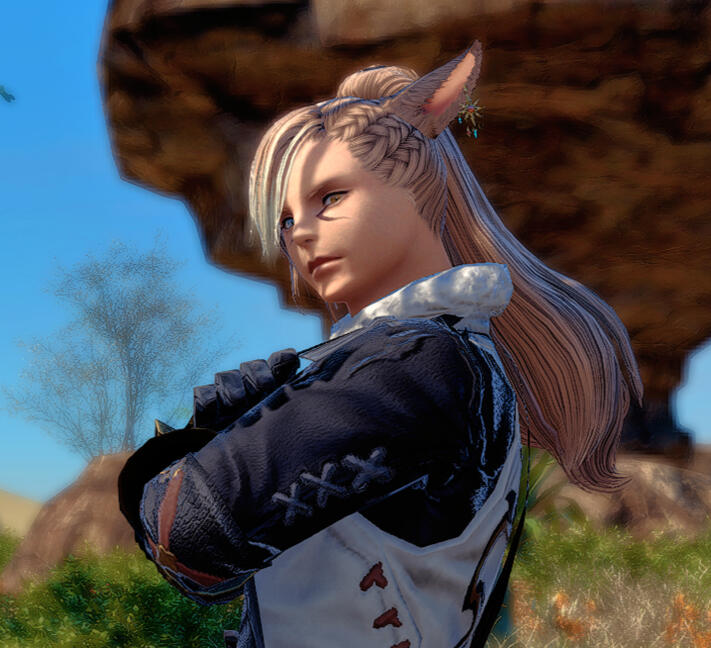
"I do what must be done so that those that can orr will not may prrrosperrr."
Sagoliian Seeker of the Sun Miqo'teFreelance Adventurer
About
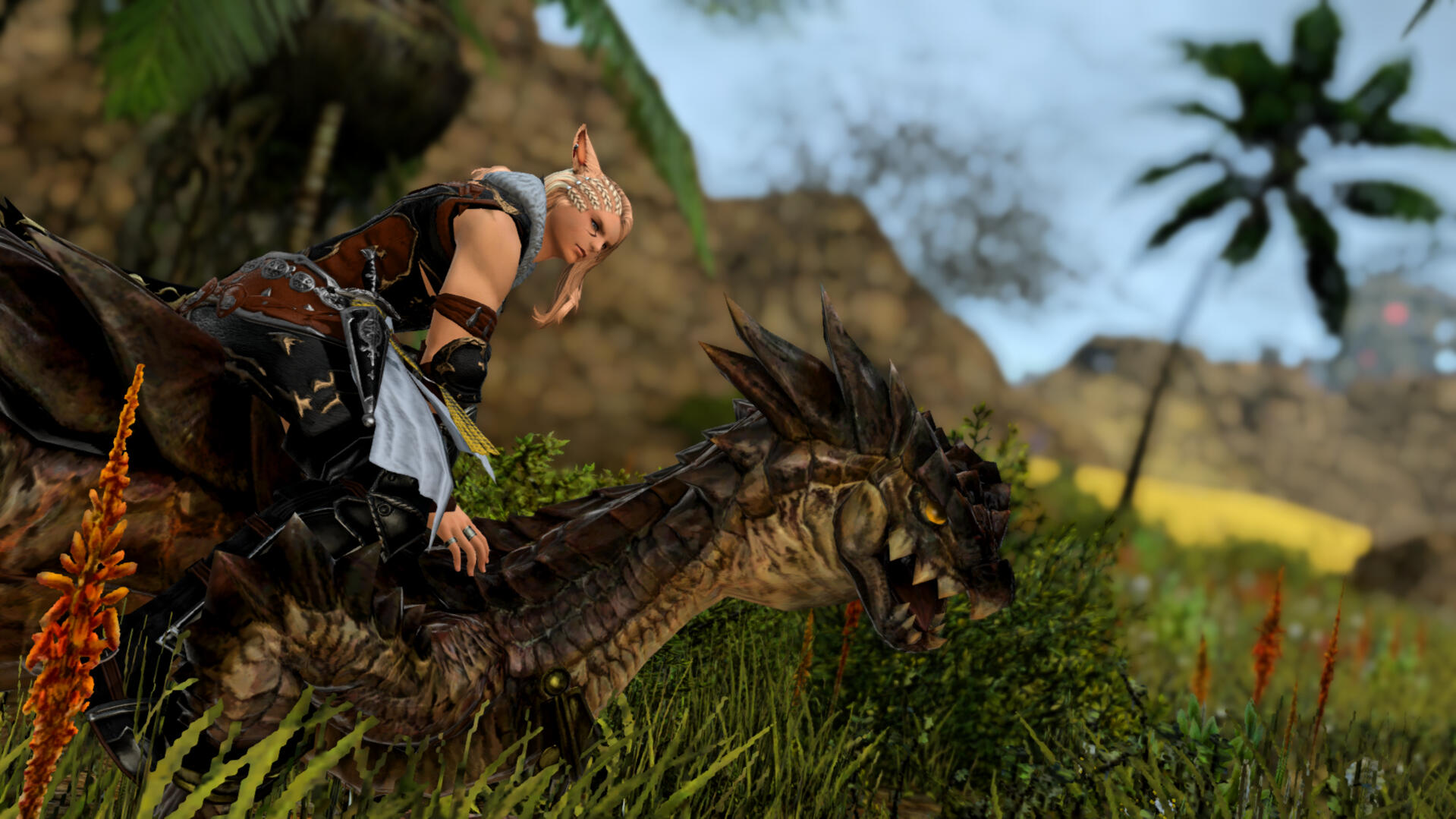
Basics
Gender: Cis Male
Pronunciation: ee-KAI-uh
Also Known As: Kaya
Age: Early 30s
Nameday: 12th sun of the 1st Astral Moon
Sexuality: Greysexual
Height: about 5'7" (about 173.2 cm)
Marital Status: Likely polyamorous (He's a Seeker..); while he has some people he's close with, he has no committed dedications
Build: Similar to a muay thai boxer
Voice: Very much like Shogo Suzuki as Vincent Valentine
Origin: A now-extinct branch of the Ee tribe in the Sagolii Desert
Languages: Sagoliian, miqo'te huntspeak, common Eorzean
Alignment: Lawful/Neutral good
16Personalities: The Logistician or The Defender
Appearance
Tall for a miqo'te, I'kaya bears the hallmarks of a warrior of the Sagolii. While he is not heavily-muscled and appears fairly lean, much of his physique is built around a strong core. His arms know the stories of the swords and spears he's held, and his legs can sprint or marathon the ever-shifting sands of the Sagolii with the ease of one on flat land. He is best as a close-quarter combatant and can withstand blows from much larger opponents remarkably well and maneuver himself to take advantage of his opponents' larger sizes to use their weight against them.His hair begins as a warm strawberry blonde, lightening toward near-platinum tips. He currently wears his traditional tribal hair (see artwork). Heterochromatic eyes of silver (right) and amber (left) can bear a quiet intensity about them. It is easy to see his resemblance to his younger brother, I'ason, but he sports a stronger jaw and certainly a much more brooding brow. Most notably, I'kaya's entire body is mapped with the scars of his people's lost war against the Amalj'aa, his time in the Bloodsands, and tribal tattoos - patterns that call upon stone, steel, and lightning, and which he uses to channel aether to form shields and other attacks (artwork shows artist interpretation of tattoos - I don't have a set design yet).I'kaya had always been free with the perception and exposure of body - seeing and being nude or close to it has never elicited any notable reaction from him. However, due to recent events that have left drastic changes in his body that might disturb others, he has covered up - notably, his left arm, torso, and neck are always covered. His right eye is also often obscured by his hair, though with less care than the other parts.
Personality
I'kaya is a difficult man to get to know. Quiet, serious, and aloof, he often seems disinterested in the goings-on around him - particularly if tomfoolery is involved - and maintains a professional distance from most things. He's calm, but can be intense, and can also be prejudiced and judgmental, bordering on arrogant. He isn't mean or aggressive, however - just jaded - and is fiercely protective of those he loves. At the core, he is traditional, but he is also pragmatic and willing to try to flex and adapt if necessary - something that is not particularly easy for him to do. He's honorable and disciplined, and some perceive him to be overly repressed, but once one makes a friend of I'kaya, one will find someone who is very loyal, reliable, and caring to the end.
Hooks
- He really likes dinosaurs.
- Improving his literacy. He started studying only after he escaped Ul'dah.
- Appreciates arts that require high discipline, like martial arts and ballet.
- Most things that relate to tribal living/life and/or the Sagolii.
- Hates Ul'dah and all things about it; also hates slavers.
- Interested in learning about the world beyond what he's familiar with. Though he may be a bit of a traditionalist stickler, he knows the benefits of and is trying to be someone more adaptable and open.
- Knitting and crocheting. It was something he picked up from a kind mender in Ul'dah and found it to be a very soothing hobby.
- Nunh-hood is srs, honorable business to him. He will look down on anyone who trivializes nunh-hood.
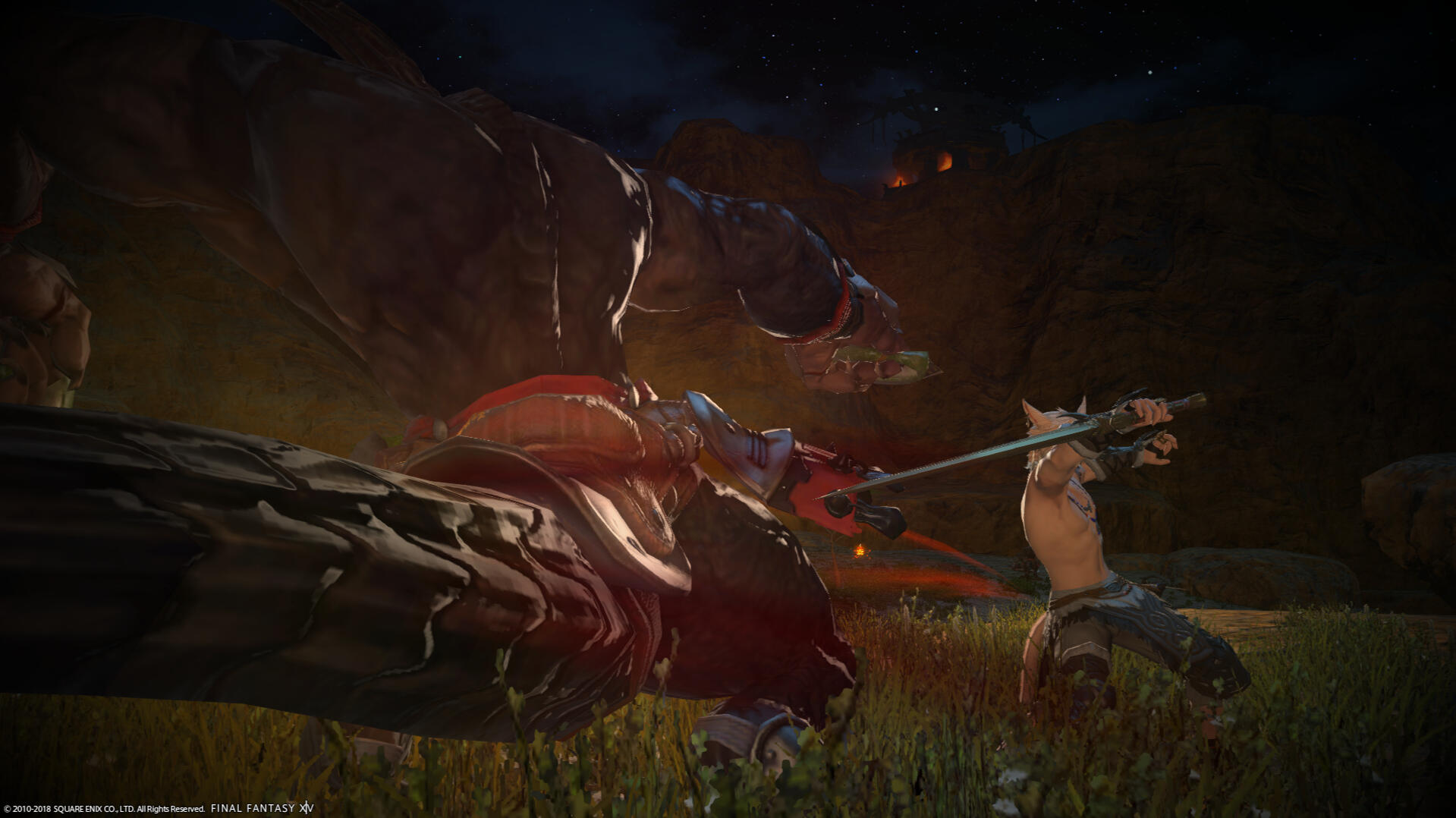
Background
I'kaya grew up with his younger brother, I'ason, in the Sagolii among a splinter branch of the Ee (Buffalo). He was seen from a young age to be a natural leader and most in the tribe expected him to become a nunh. On top of guiding and nurturing I'ason (supplementing/sometimes even replacing where their parents didn't really know how to parent), I'kaya often organized and led hunting parties for food, or strike parties in guerilla tactics against the Amalj'aa who were increasingly encroaching on their hunting grounds. He also attended tribunals and meetings with the elders as an apprentice, and was favored among the shamans. Unlike his younger brother, who never completed his rite of passage into tribally recognized manhood, I'kaya passed his with flying colors. I'kaya's pragmatism was often seen as a boon by the tribe, and he even petitioned heavily for the Ee to uproot themselves and move from the Homesands as the stresses of famine, war, and Ifrit became too heavy.Alas, his pleas were not heard, and for a tia so far on the spearhead of his tribe, once they were torn asunder by these very stresses, I'kaya was only able to flee with his younger brother. It was only 1-2 sennights in as they petitioned for refuge with the U and then Little Ala Mhigo that I'kaya was captured by slavers and sold to a ludus to be forced into fighting in the Ul'dahni Bloodsands. There he remained for cycles, displaced and unknowing of what happened to his meek brother. Believing I'ason could not have survived for long, the elder tia would find surprise salvation from Senelle Silverlight of the Maelstrom, who was acting on behalf of that self-same, meek brother.Now escaped from Ul'dah, with no intentions of returning, ever, if he can help it, I'kaya has been attempting to redefine life, initially having to share I'ason's roof. It is a difficult task, for the brothers have since branched off too far, and I'kaya found home life with I'ason to be uncomfortably discordant and alien. He eventually got his own place with I'ason's assistance and is currently finding his own way with his new freedom in this decidedly non-tribal world.
The Sagolii Ee
The following are excerpts of anthropological documentation of the Ee sept of the Sagolii as found in the almanac The Peoples of Thanlan penned by an Ul'dahni scholar by the name of Didifafo Nunufafo.
"The Ee, or Buffalo, tribe are one of many that inhabit the Sagolii Desert of Thanalan. As there are no buffalo native to the Sagolii, one must assume their ancestral kin have migrated from elsewhere - as most miqo'te in Eorzea have. As of the Seventh Umbral Calamity, the Sagolii Ee have gone extinct, though it's possible individual tribesmen may have escaped the devastation. I have had the opportunity to interact with this tribe prior to their extinction in my travels across Thanalan and find it would be remiss of me as a scholar not to record what I have learned in my time with them."
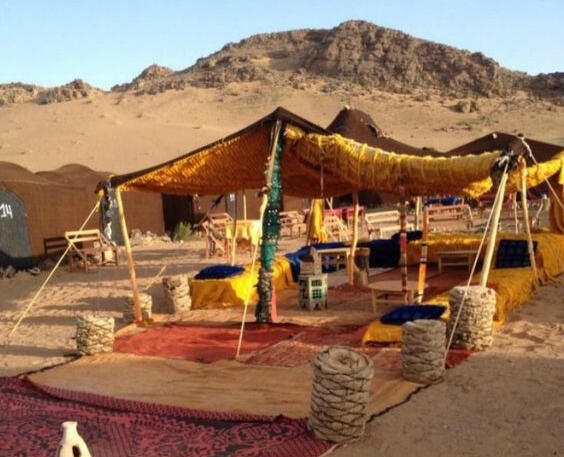
The land/The Homesands“Living in the unforgiving Sagolii, the Ee have adapted to scorching days and shockingly cold nights. The Ee territory appears to butt up right near Zanr’ak and the Forgotten Springs. Because resources are sparse and wide-spanning, the tribe tends to migrate to different locations within its territory; as such, their settlements are not permanent and typically consist of tents that can easily be put up or taken down. Sturdier structures such as ovens for cooking are made from a clay produced from the sands of the Sagolii; based on their stories, too, the Ee have historically made adobe-like domiciles to weather any needs to be more sedentary.“When tribe members speak of the ‘Homesands,’ it is less referring to a single camp than the entire square malmage of their territory. Unfortunately, due to their proximity to the zealotus Amalj’aa that believe all non-Amalj’aa Spoken living in the Sagolii are profaning their sacred lands, the Ee have had to fight fiercely to maintain their hunting grounds.”
On language:
The following are the various tongues used by the Ee -Sagoliian - To those unfamiliar, the language sounds like a melodic rush of hot, arid air rolling past the scorching sands, staccato’d by the occasional rock formations, and flowing into the pools of hidden oases.Modern miqo’te huntspeak, affected by regional influence.Old Sagoliian - by shamans and mystics only.Common Eorzean, usually with a heavy accent marked by thick miqo’te /r/’s.
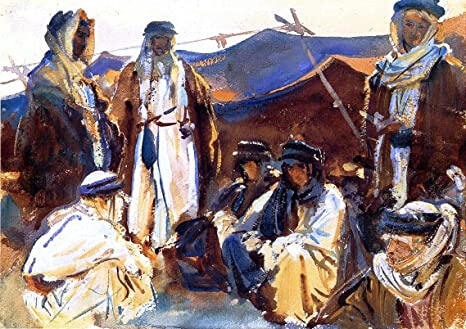
On tribal government:“The Ee govern themselves by following the edicts proclaimed by a council. Members of this council may or may not include their breeding male - the nunh - but do include the head shaman and mystic, the pre-eminent elder(s), and select seasoned crafters and hunters/warriors who have proven both their prowess and wisdom over the seasons providing for and defending the ‘Homesands.’ The council members determine plans to guide the tribe’s future - such as where to assign the skills of their various tribemates, keeping track of resources, determining if certain groups should be made to take on responsibilities tending to whatever needs arise for the tribe, and enforcing their tribal laws and resolving disputes.
“Members of the council themselves are checked by the tribe at large. If another member displaces one’s place as a more skilled shaman or mystic, for example, by virtue of overall contribution to the tribe and vetting by tribemates, then that new head shaman will take their place in the council. If a member is found to be acting dishonorably, they will be removed from the position once found to be guilty by trial.”
On honor and laws:“Tribunals are fairly simple and straightforward with the Ee. Judgment is handled by some - not all - members of the governing council, depending on the offense, with care that those judging are not too colored by relation to the ones on trial. Evidence and counter-evidence and testimony are shared, and determination of innocence or guilt is decided by deliberation amongst the judges, combat, a show of honorable determination (such as enduring a difficult trial to prove one’s innocence), or a divine reckoning from communion by a shaman - or any combination of all four. Members of the tribe swear truth under the gaze of Azeyma; if an outsider is brought to be judged by the tribunal, they are expected to adhere to the same expectations if they breached a tribal law. Outright disrespect of these norms oft leads to a swift execution regardless of actual innocence or guilt - for this is regarded as a show of guilt.”“Honor, to the Ee, is less about blind loyalty to people or rules than it is high respect of one’s own values and how one shares them in relation to others in creating a harmonious community that will continue to bring up and nurture ‘good’ individuals. In other words, to be true to oneself, but also with great love and consideration to one’s ‘family’ or ‘tribe.’ Rarely do the Ee espouse the accomplishments of a single individual without consideration of the support the tribe put in for them to thrive.”
On demographics:
At the height of their prosperity before the Ee were destroyed, there were three generations: 10% elders (over age 50), 50% adults, and 40% kits/adolescents/young adults. The tribe was composed of about 40-50 individuals, 15% male and 85% female. Of the kits, about 20% typically did not make it to adulthood thanks to the burrowing sandworms, drakes, disease, malnourishment, and other stressful environmental factors of the harsh Sagolii.Notable individuals:I’mharyus Nunh
Current breeding male before his death; flighty and somewhat childish on the surface, he’s not typically what one would imagine to be nunh material; occasionally sat in on councils, but rarely had a deciding voiceI’rhasmus Tia
Younger brother of Mharyus who never bothered to gun for the position of nunh; steadfast and an accomplished warrior/hunter who served on the councilI’nhenta Tia
Previous nunh and sire to many of the current adults in the tribe; served on the council as a ranking elderI’shvani Aschan
An elder and lead shaman; councilwomanI’zhmuda Aschan
An elder and lead mystic/alchemist; councilwomanI’hlatt Nhenta
Lead mentor or ‘teacher of teachers’ for the tribe; councilwomanI’nhyora Nhenta
Lead clothesmaker and weaponsmith/leatherworker; councilwomanU’rughii Odh
Previously of the U tribe, she came to the Ee as both an offered token of understanding between the rival tribes, and stayed after Mharyus earned her respect and admiration when he defeated a challenging tia from the U not by raw brawns, but by charisma and pragmatism - she and a few other Seeker women do come from other tribes and were impressed to stay
On trade and economy:
Outside of their warriors to defend their territories, the Ee are primarily hunter-gatherers and crafters who rely on trade with other Sagoliian peoples to produce and obtain what they need. They would send trade caravans between their tribe and others in Thanalan, fostering economic and political alliances in doing so.Some notable economic products:Sandfishing
Mythril
Silex
Drake meat and parts
Sandworm parts for alchemists
Desert spices
Glass crafts
Dyes made from Sagolii resources, especially rich blues and purples
Textiles and leathers/clothing made from raw materials obtained from trade with other tribes
Mythril-based crafts such as axe heads, bowls, armor, and scimitars
Instruments made from traded wood
Trade with people who drop by - especially for water and plants needed by the shamans for rituals that can no longer be found in the desert

On religion, values, and beliefs:
Azeyma, the Warden“Unsurprisingly, as Seekers of the Sun, the Ee exalt Azeyma, the Warden. They believe that it is through Her light and generosity that allows life to be possible. However, unlike Nophica, Hers is a harsh gift, for while the Sun makes possible for life to start and, to a degree, sustain, She can just as easily snuff life out. One need only look at the bleached sands of the Sagolii to understand this point. Thus are the Ee tempered and made strong - for as the Sun provides, She can also take away. It is through this notion that the Ee understand the balance of the land and their resources, that every resource is or can be precious and used to sustain life. They leave very little to waste - indeed, for they must.”
Djinni“It is difficult to describe the Ee concept of djinni without invoking the parallel with the elementals of the Twelveswood. As elementals have been recorded to be prevalent in Eras past, it is likely djinni refer to the same thing, though with cultural and historical differences applied regarding their purpose and nature.“In simple terms, to the Ee, djinni are invisible, formless ‘spirits’ or ‘wills’ of the land and the life or lives it supports and has supported. If the forces of nature are in balance, they are unintrusive. However, in the face of volatility, stress, or flux, the djinni may manifest in more hostile, violent forms. The easiest to perceive are in atmospheric disturbances - actual bursts of activity in the environment. Other manifestations of djinn activity may be in the form of illness, mental disturbance, and other expressions of imbalance.”
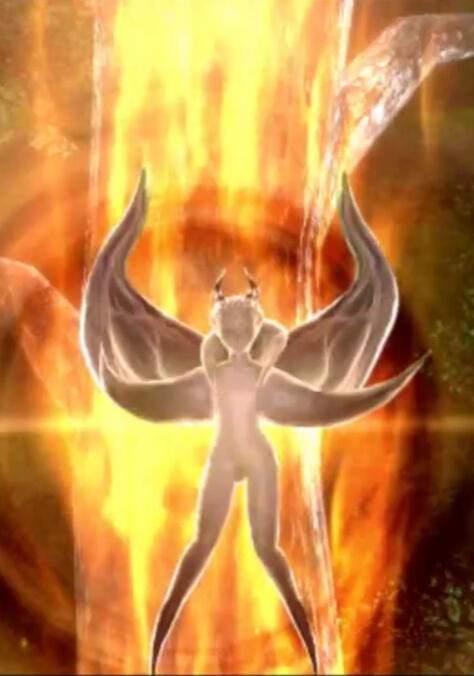
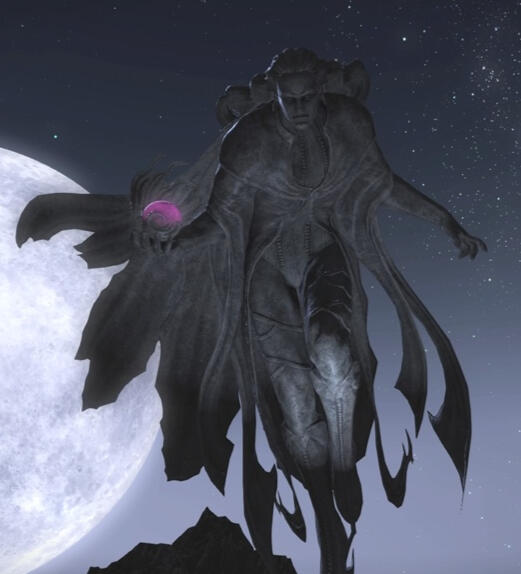
Daeva“Scholars believe Ee references to the daeva in fact are pointing to Voidsent or Ashkin. The daeva are usually associated with hostile intent or will. Recurring nightmares, for example, may be thought to be the activity of daeva. Voidsent possessions are most definitely believed to be due to these entities. Daeva ought not to be confused with Primals or their influence, either, for they are not godlike beings with concrete manifestations as Primals tend to be.”
Ancestors“The Ee do not outright practice ancestor worship, but the concept of looking to ancestors and their achievements persists in their everyday lives. The Ee have a strong oral storytelling tradition, and shamans or the Story Keeper - the pre-eminent member who is most practiced at remembering the tales passed down - would share tales of the tribe’s historical trials and tribulations with the other tribe members. It is in this manner that kits are initiated into character-building through examples of the tribe’s ancestral heroes and villains. When members pass, the Ee believe that a part of the spirit flies into the skies to watch over their descendents from the stars while the rest of the soul returns to the Lifestream under the care of Thal.”

Shamanism“When one considers the more spiritual practices of the Ee, one must understand that there is a distinction between the shamans and mystics. The Ee shamans are responsible for tribal rituals, alchemy, passing of knowledge, and cultivating the tribal relationship with the land. When one is in want of medicines or a midwife, it is the shamans that will provide it. Thinking about a temple-based parallel, the shamans are the people that run the day-to-day functions of their people’s spiritual needs while the mystics serve more as the oracles and priests.”Mysticism“As stated above, the mystics are distinct from the Ee shamans. While both are inextricably tied to the tribe’s spiritual well-being, mystics have a stronger tie with the more magickal practices such as falling into prophetic trances or performing exorcisms. These trances are instigated by ingestion of a tribal concoction made from a Sagolii cactus that has hallucinogenic properties. While both can commune with the spirits of the ancestors, it is the mystics that can follow these communions with greater effect. It is said that potent mystics may even find wayward traces of the dead and bind them into agreements to repay a debt, such as one left to the mystic going to help the spirit conclude unfinished business."As part of their duties as oracles and communers with the departed, mystics also take to reading celestial signs and aetheric patterns. As such, the tribe has an affinity for the constellations - though these constellations are not the same as those known by Ishgardian or Sharlayan astrologians."
On history, the Story Keeper, and legends:
Conflict with the Amalj’aa“Historically, the Ee have had long-standing conflicts with the Amalj’aa, especially given their proximity to Zanr’ak. However, when the Ul’dahni Syndicate declared all tribal peoples ‘beastmen’ in a bid to justify grabs for their resources, the fanatics would express aggressive retaliation by learning how to summon their deity, Ifrit, the Lord of the Inferno, and seeking to scour all Spoken profaning the Sagolii - and the Ee were no exception. In fact, they were one of the peoples hit hardest by the Amalj’aa attacks. Past tension and conflict turned into all-out war, with clashes happening frequently, with the miqo’te sometimes winning battles, but the Amalj’aan advantage of Tempering swiftly eroded their numbers. So fierce was this antagonism that forced kin to slay kin that few Ee tribesmen cared to remember that past encounters with non-fanatic Amalj’aa - such as the Brotherhood of Ash, or, in their tongue, the Ahdimat Allahabi(translated to ‘The Flameless Ones’) - had, indeed, been benevolent. This war, alongside the natural pressures of surviving in the Sagolii, followed by the Calamity, ultimately spelled the unfortunate end of this sept of the Ee.”
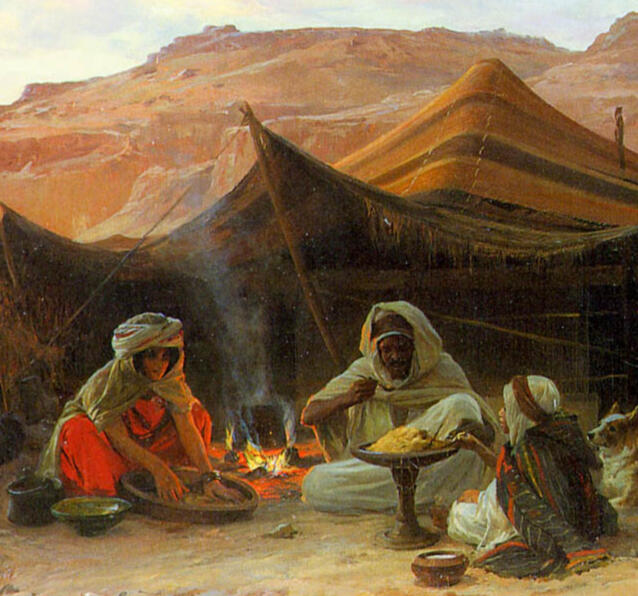
On customs, rites, and norms:
Family“While the tribe as a whole can be considered one familial unit, and many functions such as meals can be communal, when all is said and done at the end of the sun, the members split off to sleep in tents in groups of about five - typically sister dams and their kits, or even just one dam and her kits. Sometimes, these smaller groups may be youths in training with the masters of their chosen disciplines, but these are not common. It is in these smaller moments that the members that had been engaged in busy communal living can decompress with their closest in more privacy.
“As it goes with most societies that integrate familial units larger than the nuclear members, there is much sharing of resources, many members that can and do help care for others not of their ‘tent,’ and, relatedly, many that can and do gossip, hold grudges and judgments, and stir the pot. Favorites and pariahs emerge, as well as reputations - both positive and negative. However, on the whole, there is a strong bond between those of the Ee, even if bitter internal rivalries may exist.”
Mhadrasa“One of the major communal tribal activities rests in the rearing of kits. They are typically expected to learn in mhadrasa - something akin to boarding school, but not quite. The kits are led by older youths who are in turn supervised by a team of mhudarris or ‘headmistresses/masters,’ as it were. There, they may learn as the entire community of kits, or split off into smaller groups to learn tasks assigned by their group leaders. It is in these tender cycles of their lives that they may form the closest bonds that will carry into adulthood and beyond, as kits find their kindred with whom to endure the trials and lessons set before them. All kits are expected to know how to fight, hunt, and do basic tasks of daily living, including cooking, at least one craft, and being familiar with the land to seek out resources and survive in the wilderness.“It should be noted that the mhadrasa experience is, expectedly, different for tias, whose lessons are focused on the importance of not only the nunh, but tias as a whole. While the nunh is undoubtedly important, tias serve with equal importance by supporting the tribe. If any choose to leave to make a name for themselves - perhaps in hopes of one day returning to challenge a nunh after he gets some worldly experience under his belt - it is always an honor for the tribe that the rest of the world can see the individuals they have nurtured and grown. As such, tias are expected to train and be especially hardy, and must know how to operate in warbands whereas this expectation is more lenient with the female kits due to how few males get born to miqo’te.”
Rite of Passage“Every kit is subjected to a rite of passage to prove if and when they are ready to take on adult burdens to contribute to the tribe. These rites are not the same for every kit and in fact are crafted from tribal assessment of the kit’s development and personality and finalized by a shaman. As such, the rite may consist of a solo journey meant to test the spiritual limits of one kit while, for another, the task may be to weave a blanket with an intricate pattern to test patience and problem-solving.“If the kit passes their rite, they are officially recognized as an adult by the tribe. For tias, this means they receive their full-body tribal tattoos - designed after three elements determined to align with their spirits - as well as their ritual circumcision to represent they have left their kithood.”
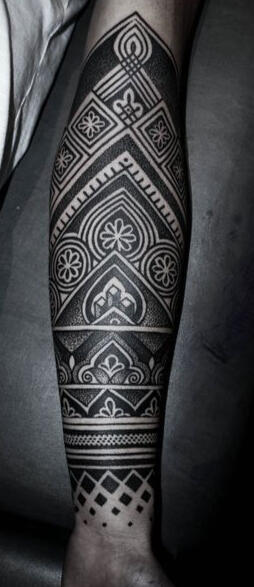
Nunhhood and Tias“Contrary to common perception, the tribal nunh does not necessarily have a leadership role. His primary function is to serve as both a father and father figure to the tribe’s kits and to oversee the security of the tribal territory - a demanding role, to say the least. In order to do this, he does not necessarily have to be a ‘strong warrior,’ but a pragmatic one - and this pragmatism, along with a nurturing core, appears to be the favored traits by the huntresses of the Ee, traits that they wish to instill into their kits. A nunh does not take his position without judgment and approval by the huntresses, for it is they who determine whether a challenging tia has won. Furthermore, the challenge to become nunh is set forth by the huntresses. Once he has secured the honored position of nunh, he is bound by the mysterious schedule of the huntresses and serves them during their periods of quickening.“Additionally, to further clarify common Seeker misperception of rampant inbreeding, there are practices among the Ee that openly exchange members with other tribes that roam the Sagolii. The Ee most commonly deal with the U for their precious water, and several huntresses that now reside with the Ee were born U. At times, huntresses of a tribe may favor the nunh of another and choose to leave to start her family with him and his tribe. Relatedly, a tia may choose to leave the Ee and challenge the nunh of another tribe. Unsurprisingly, intertribal politics can and do impact these exchanges; allied tribes may have more open interactions while rivals do not.“Finally, the Ee nunhs do not ordinarily sentence male kits they did not sire to death or exile. As mortality is so high in the Sagolii even without this additional cultural stress, even if an amorous tia and huntress pair end up with a kit not sired by the nunh, the tribe would take care of them so long as they continue to contribute to the tribe. This is not to say, however, that undesired rumors regarding the circumstances of the kit’s birth would not circulate.”“As for tias, these tribesmen are freer to pursue their personal interests. While the position of nunh is one of highest honor, not all tias necessarily wish to pursue it, though the norm is for tias to go build their reputation amongst their tribe regardless of being considered possible nunh material. An example can be found in I’rhasmus Tia, younger brother to the nunh, I’mharyus Nunh. He is a tia who has never desired the position of nunh, for his interests were more in dedicating time to ensuring the safety of his tribe. As such, he became a stalwart and highly respected warrior who served the tribe and his brother faithfully. It should be made abundantly clear that, despite prejudices of some of those from the city-states, it is not the norm to consider tias ‘submissive to’ nor ‘lesser than’ nunhs in the tribe itself.”

Alcohol“As the Ee do not farm, the production of arak is not done on a large scale, but as it only requires two ingredients - grapes and aniseed - this is the preferred alcohol of which the tribe imbibes. It appears to be used in ritual just as much as in needing to take the edge off stress - of which the Ee must endure much.”Food"Ee cuisine is aligned with most of the peoples that live in Thanalan, with staples being those they can make from local resources they can hunt or forage, but frequent intermixing and trade with the surrounding peoples have also influenced the evolution of their foods. As with many dishes from Thanalan, theirs are richly-spiced and fragrant, with drake meat and various sand fishes being the primary sources of protein, often cooked in tandhoori ovens. Some recognizable dishes may include: hummus, baklava, falafel, shawarma, and miq'abobs.
"The Ee typically eat communally, seated around a spread of food 'family style.' They do not use utensils and scoop from the dishes using pita or with their hands using a pincer grasp formed of their thumb and two fingers. Warm hospitality is a value of the Ee and they welcome visitors with open arms and do not hesitate to share a meal in spite of the scarcity of resources in the desert."
Fire dance and celebrations“On the subject of dance, it is known as rakhs bhaladhi and features movements of the hips and torso. Primarily torso-driven, it focuses on isolations of these muscles and emphasizes articulations of the hips. Within the dance, a dancer may employ percussive, fluid, and/or sinuous movements, and shimmies, shivers, and vibrations.“Living as they do in this fire-aspected land, it is little wonder that the Ee frequently incorporate fire into their dances. Dance is utilized both for celebration and for war; in the case of the former, there is always celebration after a rain - rare as it is in the Sagolii. In the evening after the day the rain subsides, the tribe will celebrate with a communal dinner seated around their best dancers, who will channel the members’ joy and relief in their fire dance, for it is after a rain that the desert provides its best and most bountiful resources.“Other tribal celebrations include: the day kits pass their rite of passage, predictions of solar eclipses, and various tribal holidays and remembrances.”
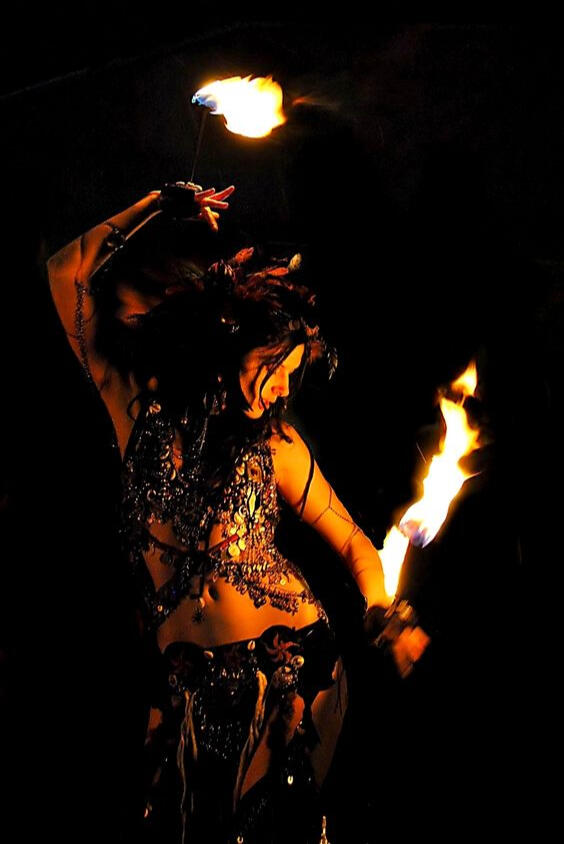
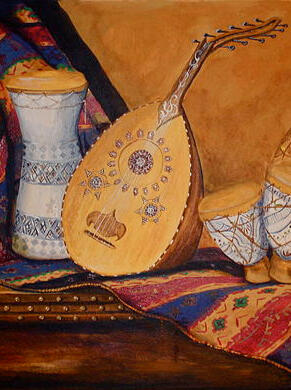
Music“Unsurprisingly, given their location in Thanalan, musical traditions of the Ee reflect the general style of the region, such as its musical tuning, rhythmic-temporal structures, use of microtones, and a musical mentality that keeps their music aesthetically homogenized with the Thanalan tonal-spatial and rhythmic-temporal structures whether composed, improvised, instrumental, vocal, secular, or sacred. Common instruments the Ee use include the kudüm drums, kemençe, oud, and ney. They are especially fond of the oud and their drums.“Music permeates all walks of life for the Ee. Being a people with a strong oral storytelling tradition, it is therefore unsurprising that song is indispensable to the tribe for preserving its traditions, knowledge, and its very soul.”
The Warrior Code and War“There is a strict code of the warrior held by the Ee. While all members of the Ee are taught to fight, not all follow the path of the warrior. Similar to the Far Eastern concept of bushido, a warrior of the Ee adheres to a code of morality and conduct that befits the honor of being considered such a member. The Ee upholds four pillars in this code: Honor and Respect, Sincerity and Integrity, Duty and Compassion, and Ferocity and Courage in the Face of Adversity. These tenants are seen folded into Ee warriors in any number of ways, from a permanent paint stain resembling four claws slashed on their faces to four braids in their hair. Tias will wear braids in their hair that signify their reverence for these tenants, and to be bequeathed these braids by their tribal warrior elders is considered a high honor.
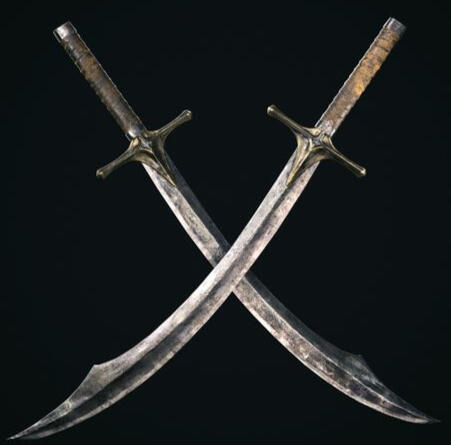
“In war, as they are almost always fighting, the Ee are fearsome combatants. Despite their size and any stresses presented by the Sagolii, they are conditioned from kithood to not only be hardy, but pragmatic. Due to their persistent disadvantage, the Ee warriors are extremely resourceful and typically employ guerilla tactics, along with strong teamwork and efficient communication. They are also taught to focus less on personal strength and instead on redirecting the balance of their opponents. As such, it is an amazing thing to witness an Ee warrior do single combat with an Amalj’aa easily three times their size.”
Skills and Talents
Combat
| Attribute | Rank |
|---|---|
| Strength | 7/10 |
| Agility/Dexterity | 6/10 |
| Stamina | 10/10 |
| Speed | 6/10 |
| Magic | 4/10 |
| Stealth | 5/10 |
| Attribute | Rank |
|---|---|
| Defense | 9/10 |
| Recovery | 8/10 |
| Improvisation | 6/10 |
| Reliability | 10/10 |
| Teamwork | 9/10 |
| Danger to Allies | 1/10 |
I'kaya spent his whole adolescent life learning and training to protect and preserve his tribe. Whether it was defending their settlement from sandwurms to skirmishes with the increasingly aggressive nearby Amalj'aa, the Seeker has developed into a warrior who fights best defensively in melee, holding the ground so that other tribemates can do damage from afar. Used to fighting opponents three or so times his size, he is not one who is easy to back down. He prefers to use one-handed weapons - scimitars and swords especially - but he is also proficient with a spear. The inks of his tattoos serve as a conduit to channel his aether into immaterial shields and other attacks or defenses.That said, I'kaya's experience is limited to the battles he's had in the Sagolii and the Bloodsands. He has been expanding his experience with other types of opponents, like machina and voidsent, and fighting on different terrains such as ice.
Other Skills
| Attribute | Rank |
|---|---|
| Swordsmanship | 9/10 |
| Spearmanship | 7/10 |
| Hunting/Tracking | 7/10 |
| Shamanism | 5/10 |
| Literacy | 4/10 |
| Knitting/Crocheting | 5/10 |
| Swimming | 3/10 |
| Leatherworking | 6/10 |
| Music and Dance | 6/10 |
| Responsibility | 10/10 |
| Attribute | Rank |
|---|---|
| Empathy | 7/10 |
| Attention Span | 10/10 |
| Social Awareness | 6/10 |
| Mining | 6/10 |
| Resilience to Change | 4/10 |
| Wilderness Survival | 6/10 |
| Fishing | 2/10 |
| Protectiveness | 10/10 |
| Faith in Mankind | 2/10 |
| Libido | 1/10 |
Outside of battle, I'kaya has residual skills from tribal life, such as carrying on some shamanistic rituals thanks to his time spent with I'shvani, their head shaman, as her assistant, as well as mining, hunting, and the like. He is picking up a few new skills, such as literacy, fishing, swimming, and knitting and crocheting, but most of his strengths are in his role as a defensive point-holder in a small warband.
Relations
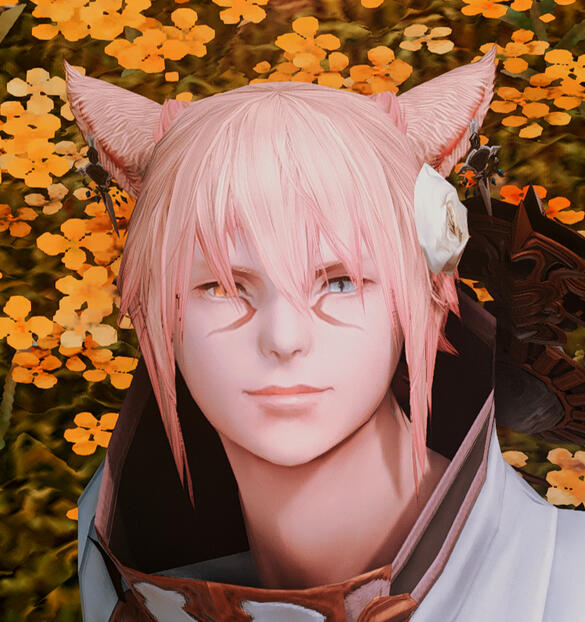
I'ason Silverlight - younger brotherI'ason and I'kaya have a complex relationship, as brothers do. About as similar as steel and water, the two have learned much from one another - whether their differences drive the other crazy or become a valued asset the other may be jealous of. One thing is for certain: a threat directed at I'ason means that I'kaya will be your enemy.

I'mharyus Nunh - sire (deceased)I'mharyus was a much-loved father of I'kaya's generation of Ee. Though unable to spend as much time as he would like with each kit due to his duties, the life-loving nunh was the anchor of the Ee and a figure to which I'kaya looked up, along with I'mharyus' blood brother, I'rhasmus. I'mharyus' end at the hands of assaulting Amalj'aa became the death knell for the Sagolii Ee.

I'ghrane Nhenta - dam (deceased)Also a life-loving tribeswoman, I'ghrane was one of I'mharyus' closest huntresses. A fearsome warrior, the woman unfortunately had no sense for motherhood, leaving the independent I'kaya to become the main 'parent' for the often-dependent I'ason. After I'mharyus' fall, I'ghrane went with a band to seek revenge and never returned.
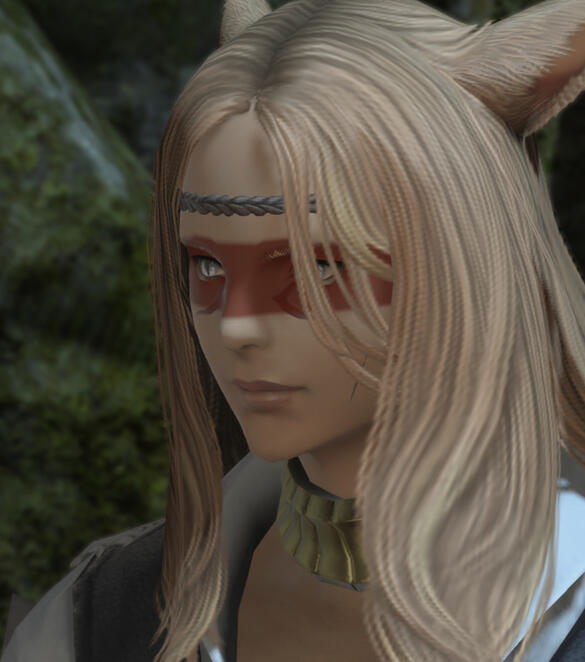
I'rhasmus Tia - blood uncle (deceased)I'rhasmus was a foil to the almost-ditzy I'mharyus. Serious, duty-bound, and honorable, some have joked that he was the true sire to the dour I'kaya - something both brush off. The younger brother of I'mharyus, I'rhasmus has dedicated his life to the safety of his tribe and had become the connection for I'kaya to realize there was a friendly splinter of Amalj'aa, whom the tia knew as Ahdimat Allahabi, or Flameless (known to players as the Brotherhood of Ash).Having originally disappeared along with many others soon after the death of I'mharyus, I'kaya found I'rhasmus cycles later - Tempered - and, with Senelle, had to put him to rest. After the deed was done, I'kaya claimed the slain tia's soulstone and scimitar, promising to uphold his duty as the Ee's protector.
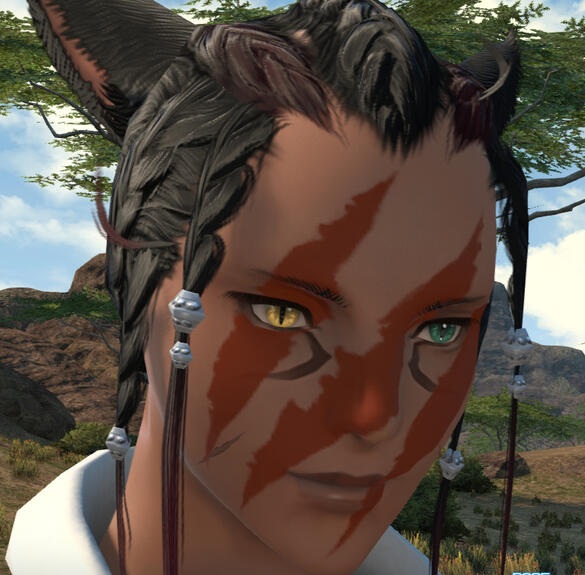
I'rhaksha Tia - tribesman (deceased)Beloved warband brother to I'kaya, I'rhaksha often butted heads with his tribesman over his protectiveness over I'ason. Fierce, proud, and bound by the traditions of the Ee, I'rhaksha was an integral warrior in the Ee's war against the Amalj'aa. Unfortunate circumstances that ultimately led to his death and the death of I'mharyus have left a lasting effect on I'kaya.
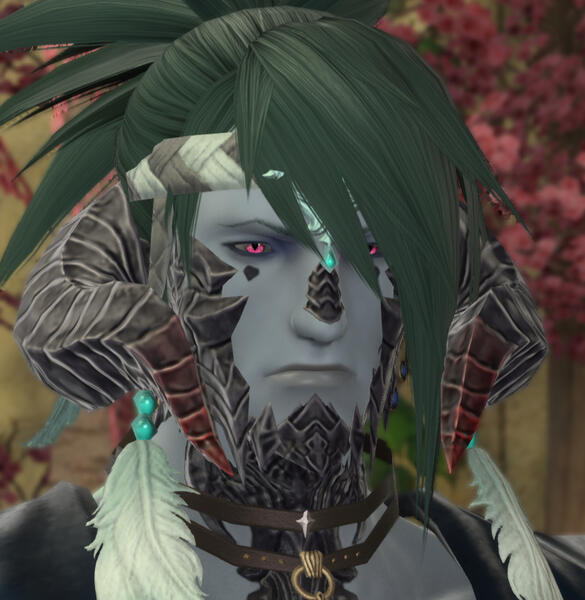
Khutula Qestir - bushido mentorWordless as the Qestiri are, I'kaya and Khutula connected easily when the two found they shared a sense of tribal responsibility in assisting in Reunion's defenses. Finding the oddly-eared ijin to hold talent with the blade, Khutula agreed to train the young Seeker in the way of Xaelan swordsmanship and honor. Though no words were ever exchanged between the two, sometimes, wisdom and kinship transcended the bounds of words.
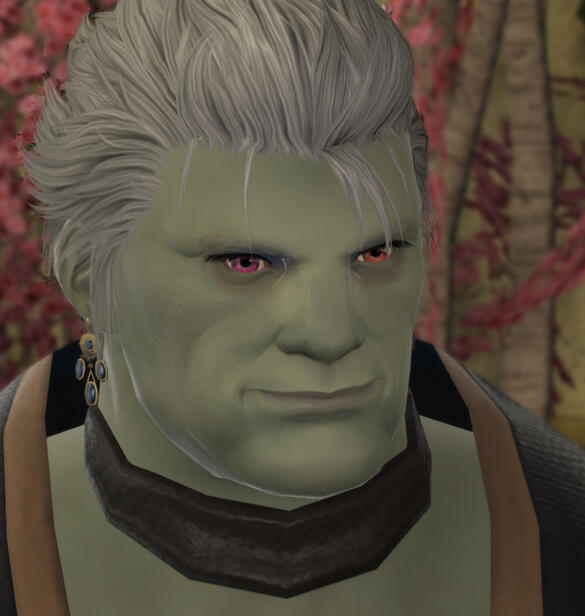
Norinaka - bushido mentorBefriended by I'kaya during the same journey taken to the Far East as part of a pilgrimage seeking inner peace, Norinaka is an elderly blacksmith who used to fight alongside a distinguished samurai of Hingashi. Though his days are far behind him, the patient Norinaka has much wisdom in calming one's mind and tales of philosophy to impart on the young Seeker.
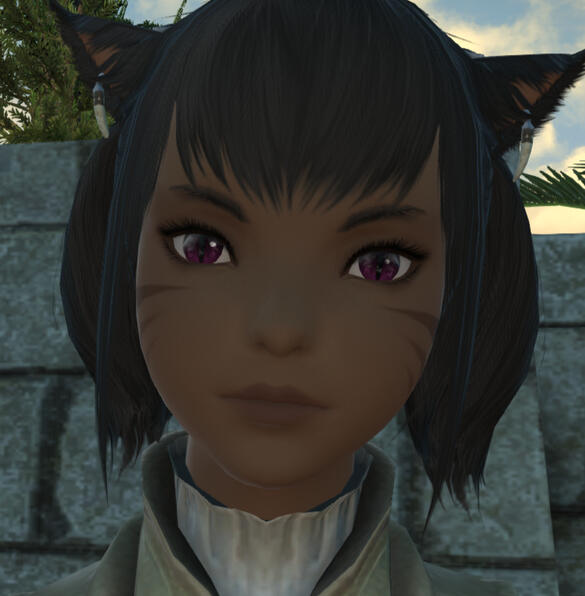
F'lhupsa - menteeA ward of the orphanage I'kaya volunteers at in Moraby, F'lhupsa lost her right hand when she was caught trying to steal a crust of bread from a Thanalan merchant's stall. Relating immediately to the young miqo'te, I'kaya has introduced her to a friend who similarly lost a limb, yet overcame their obstacles with technology. She has since become very attached to this story I'kaya had given her of hope and follows him whenever he invites her to learn from the Machinists' Guild in Ishgard.
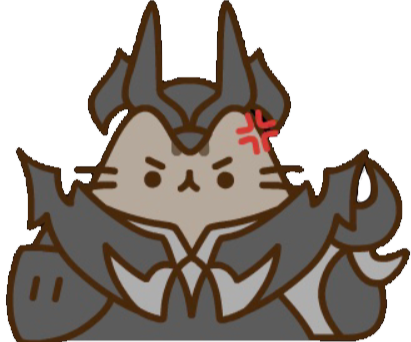
Iuli - menteeI'kaya's star pupil in his self-defense classes for the Moraby orphanage, Iuli is a driven Hrothgar cub who hopes to one day be strong enough to protect everything he loves. He thrives on the stories of the Ee I'kaya shares with him and looks up to the old heroes of the Sagolii, having lost touch with his own. (Don't @ me - XIV has no Hrothgar cub models).
Media
Art and Images
Images of other characters or images by other artists used with permission.OOC note: The tattoos should always ICly be on him. I just can't be arsed to swap them out all the time between all my characters, hence they seem to disappear in some shots.
Music and Other Media
YouTube Playlist contains songs used to set a mood. Lyrics generally, but may not all, reflect the views of my character. Please mind your speakers or headphones when clicking the button.
OOC Info
RESIDENCES
The Gilded Leaf Lodge
- The Mist, Ward 6, Plot 30Apartment
- Lavender Beds, Ward 15, Lily Hills, #21DISCLAIMER
If an aspect of RP makes you uncomfortable in a scene we're playing, please send me a /tell, letting me know. Communication is very important, more important than potentially keeping immersion.I will not entertain drama llamas. Full stop. I'm old and moldy and do not have time to deal with problem-escalations during my happyrelax funtimes.Speaking of old and moldy, yes, I'm 40+, have a full time job, and help caretake for an older individual. I understand life can get in the way, so I ask for the same consideration.
PERSONAL RP LIMITS
I will play mature content and themes (violence, sexuality, drug / alcohol use) as long as they're logical in a plot-driven encounter. Coarse and excessive language. Temporary injury and incapacitation. Temporary imprisonment.I do not do cold walk-up RPs. Please PM me first and let's get to know each other first. Strong preference for synchronous RPs, whether in-game or through Discord.If you tend to character-roulette and can't stick with a character long-term, consider me not interested.Ask about long-term and/or permanent injury and disfigurement. Long-term captivity or imprisonment.I won't play permanent character death, anything mature-themed with players under 21. Nothing against players who may be more mature than their age; it's more a personal thing for me, since I work with young'uns up to age 19.CONTACT
I'kaya Tia (or, more successfully, my main, I'ason Shariq)... on Balmung of Final Fantasy XIV's Crystal Data Center






























































